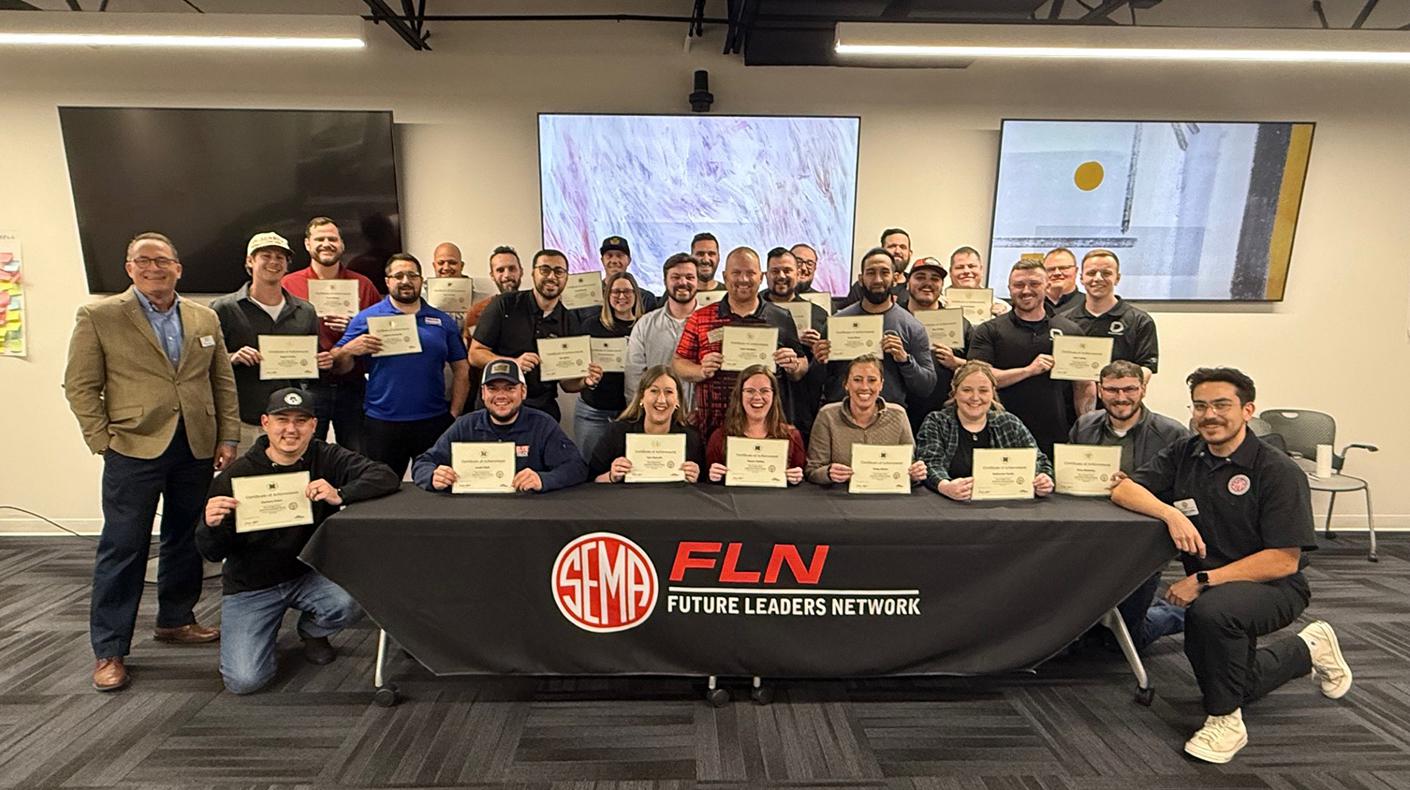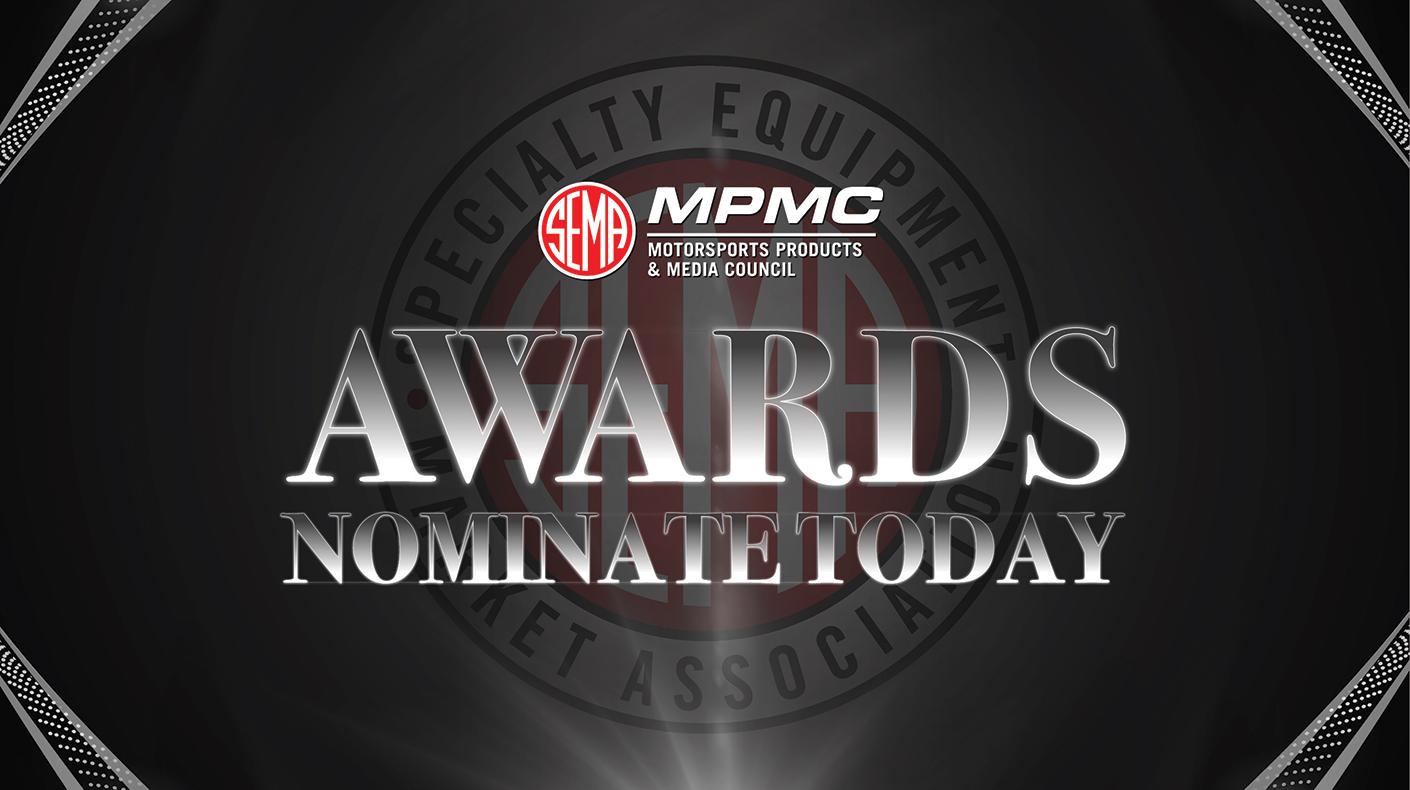SEMA News—February 2012
BUSINESS 101
By Steve Campbell
Trade vs. Consumer Advertising
Using Proven Methods for Marketing Success
 |
|
“The most important aspects of any communication message are first identifying your niche and then defining your audience,” said Zan S. Martin, president and CEO of Martin & Company Advertising. “The trade needs to know why they should choose your parts over a competitor’s, so you must identify what your strengths are and create hard-hitting messages that bring those strengths to light. For consumer campaigns, it is essential to get into the head of your potential customer. Know his demographics and psychographics. If you know what motivates him, you know what messages will lead him to choose your brand over another.”
The goals obviously differ between trade and consumer targets, and the approach to each is determined by the underlying purpose of the campaign. The two basic methods are “pull” ads, which draw buyers to a website or store, and “push” ads, which send an informational message out to a broad group.
“Consumer advertising most often employs a pull strategy to create demand among product users,” said Tony Curless, president of Aftermarketing LLC. “Some typical objectives for consumer advertising include introducing new customers to your product, increasing awareness among existing customers, reinforcing brand awareness in the marketplace and stimulating product usage. On the other hand, trade advertising employs a push strategy to persuade retailers and distributors to help promote your brand or products to consumers. Typical objectives for trade advertising include acquiring new retailers or distributors, encouraging stock orders and improving relationships with product resellers.”
 With more than 25 years of experience, Tom Marx is the president and CEO of The Marx Group, a full-service advertising agency that specializes in business development, marketing strategy and communications support services to the automotive and heavy-duty aftermarket. The Marx Group is headquartered in San Rafael, California, and has remote staff in New York, Chicago, Nashville and Los Angeles. |
|
 An avid off-roader and performance driving instructor, Tony Curless started Aftermarketing LLC in 2004. Aftermarketing is a niche marketing agency dedicated to helping aftermarket automotive parts manufacturers and retailers improve product and brand awareness in the marketplace. The company primarily works within the off-road industry but also enjoys the challenges of working in other segments. |
|
 Zan Martin, a 26-year industry veteran, has developed strategic marketing plans and product launches for some of the automotive industry’s most well-known brands. She was elected to the SEMA Board of Directors in 2009, is the current chair of the SEMA Marketing Task Force and is a member of the Truck and Off-Road Alliance and the SEMA Businesswomen’s Network. |
|
 Paul Schmidt is the director of account services and lead account strategist for Blue C in Costa Mesa, California. He is responsible for the overall management of Blue C’s relationships with its clients as well as their strategic planning. Throughout a 19-year career, he has worked with clients such as Yamaha Motor Corp., American Honda, Toyota Motor Corp., Wheel Pros and Maxxis Tires. |
Deciding what method to use to deliver the message is an art all its own. The number and scope of consumer advertising outlets is nearly overwhelming and includes print, broadcast, Internet and mobile applications (the newest darling). Social media in particular, whether accessed from a desktop computer, a laptop, a smartphone or a tablet, have created a new dimension in marketing. Part of the advertising process revolves around deciding which outlets to use.
“The type of media used depends on the product itself and the market niche,” said Bill Holland, president of Holland Communications Inc. “While we are seeing more and more emphasis placed on electronic media, the use of print stays solid. The key factor is to determine which media the target audience is using for research and which is primarily entertainment. A hardcore product needs to be marketed differently than a broad-based item that is an impulse buy. You also need to reach the potential customer who is actually buying products, as opposed to the ‘wannabe’ enthusiast. And the approach will vary by market niche. For instance, young sport-compact owners are much more apt to favor electronic and social media than older street rodders will.”
Martin said that the sheer magnitude of social media influence has changed advertising, marketing and public relations over the past few years. When the Internet first began to boom, for instance, buttons and banners were all the rage—only to falter when research found that consumers didn’t really pay much attention to them.
“You must find ways to incorporate online branding in more strategic methods,” she said. “ I would strongly urge any company not already engaged in Facebook to create a page and begin to develop relationships with your followers where the opportunity exists. In addition, most of my clients who have broadened into television advertising have seen the greatest return on investment over other forms of advertising, since they can track spikes in website traffic and sales after airings.”
And while the Internet and television provide big audience numbers and broad appeal, targeted traditional enthusiast publications still offer a strong following of consumers who are proven and qualified buyers.
“Some folks are ready to call magazines ‘dead,’ but I strongly disagree,” said Jim Wirth, president of Wirth & Wirth Advertising Inc. “Radio did not replace newspapers; TV did not replace radio; and I think car magazines will be around for a long time. As evidence, Hot Rod magazine is still selling more than 600,000 copies per month. Businesses need to support one type of advertising or marketing medium with the others.”
Wirth said that delivering multiple impressions through a variety of outlets provides consumers with product and brand familiarity. Social media users who also see a product advertised in an enthusiast magazine may view the repeated exposure as confirmation of a product’s value.
“In order to select the most appropriate media types, you must know where your customers are spending their time and how receptive they are to promotions from that type of outlet,” said Curless. “Your return on investment will be greatest when you deliver the right message to the right audience at the right time. Consumer magazines allow you to deliver your message to a large, targeted audience. On the other hand, television allows you to demonstrate the product, which can be far more persuasive and engaging for the consumer. However, these two outlets can be cost prohibitive for smaller companies and those wanting to minimize risk. In these situations, the Internet is often the best choice because you can still reach a large and targeted audience while also allowing consumers to view video demonstrations of your product in use. An additional benefit of online advertising is the ease with which consumers can share your promotion with social networks, which essentially are the digital equivalent of ‘word-of-mouth’ advertising.”
Tom Marx, president and CEO of The Marx Group, also believes that TV and the Internet provide the most effective ways to target specific audiences for certain types of products but that advertisers should touch the audience across all media spectrums when appropriate.
“Having a balanced approach works when there is sufficient budget,” Marx said. “When a small budget dictates choosing limited sources, it is better to make a big splash in one rather than small punches in many. Watch where your competitors are advertising and advertise with at least as large a presence as they are if you agree with their approach.”
Nearly all of the advertising and public relations professionals we spoke with also agreed that purchasing patterns are cyclic among consumers and can help determine the best times to buy space or time.
“Automotive consumers are prone to cabin fever in much of the country, and so they start getting interested in their car hobbies in late winter and early spring,” said Wirth. “We find that the strongest months for advertising are usually February through June.”
|
In the case of trade advertising, the aftermarket marketing and advertising experts almost universally agreed that centering activity around the SEMA Show and other fall trade events is a highly efficient way to promote both new and existing product lines. |
|
|
“We still observe the best times of the year to launch products based on competition in the market, economic situations or consumer spending,” Schmidt observed, “but we now have a much more open palette, since we can hit consumers practically everywhere and anywhere with our tactical vehicles. We look at market conditions, industry activity, competitive positioning, recent competitive product placement, current economic conditions and consumer trends in spending, and we conduct thorough focus groups in which valuable information is obtained to determine when, where and how the product can be most effectively launched to obtain maximum exposure and engagement by the target.”
In the case of trade advertising, the aftermarket marketing and advertising experts almost universally agreed that centering activity around the SEMA Show and other fall trade events is a highly efficient way to promote both new and existing product lines.
“Trade advertising is critical, because no matter how many reps or salespeople manufacturers have, they cannot reach all of the counter people, who are the manufacturers’ last line of defense,” said Don Fall, president of Fall Advertising. “We recommend especially highlighting new products and their features.”
Even so, cautioned Marx, there is a challenge to not getting lost in the vast number of ads that run during the show season.
“The industry is in a cycle that demands fall promotions to launch products at the SEMA Show, Performance Racing Industry trade show [PRI], International Motorsports Industry Show [IMIS] and other end-of-season events,” he said. “As a result, we believe it is best to run a frequency that gets eye share throughout the year.”
And, added Fall, hit every possible way that the trade and consumers can hear about those new products while also ensuring that sufficient inventory is available to not only meet demand but also to meet it at the right time.
“Make sure the consumer will not be disappointed or swayed to a competing brand if the distribution outlets don’t have a product because the manufacturer can’t or isn’t shipping,” he said. “And it doesn’t do much good to launch a new drag-racing product in September because it won’t help win any annual championships. Instead, time the launch to the racing season if it’s a racing product; key accessory launches to the proper season if they fit a season. And key an accessory that’s not seasonal itself to the buying season of the vehicle category.”
While much of the advice from advertising professionals is applicable to any company and any product category, budgetary concerns may play the largest role in how products are marketed for small- and medium-size companies. While large firms can experiment with different media and take some risks with unique programs, smaller businesses don’t have that luxury. Taking advantage of low-cost options is paramount.
“First, make sure that your website is a highly effective sales tool, not just the place where you list all your products or brag about how big your building is or how many employees you have,” counseled Wirth. “Then, if your website is truly effective, use various media outlets to drive customers to it, and monitor every outlet for effectiveness as carefully as you can. Careful plans and strategies can often reveal a certain amount of information about what is working and what is not, and that allows you to constantly improve the effectiveness of your advertising and marketing budget.”
|
A company might produce the best product the world has ever seen, but it may as well not exist if people don’t know about it. That’s why retail advertising to end-users is crucial to bringing business into a store or to a sales website. |
|
“If a manufacturer needs to increase distribution, it would make sense to up the trade campaign,” she said. “Conversely, if brand awareness and product introduction are the needs, a consumer campaign is in order. Either way, it is important to either team with a knowledgeable advertising agency that has a depth of experience in the market or utilize an experienced in-house marketing person or team to thoroughly research the options available and make informed recommendations.”
The experts were unanimous in advocating the use of professional services whenever possible, and that makes sense. A performance company wouldn’t want a baker to design its cylinder heads, so why count on an engineer or an accountant to understand and implement advertising and marketing strategies?
“Advertising is an investment, and it can easily become a waste of resources if not planned and executed effectively,” Curless said. “More than anything, companies need to make sure that their offers are both compelling and actionable. This requires three critical elements: a hook that captures the attention of your customers and evokes an emotional response; strong imagery that draws the customer to your advertisement; and a call to action, which many advertisers overlook. An ad without a call to action is a wasted opportunity. You must provide the customer with a steppingstone between the advertisement and the purchase decision. A professional agency can help you refine each of these steps.”
 Bill Holland, president of Holland Communications Inc., has been a SEMA member since 1975. He has worked with both traditional and new media, and he has participated in many forms of motorsports and street rodding. While many of the agency’s clients are long-established firms, he enjoys working with newcomers to the aftermarket. He proudly serves on the SEMA Scholarship Committee. |
 Don Fall is the owner and president of Fall Advertising. The firm is a third-generation advertising agency and is dedicated to the automotive aftermarket. Fall Advertising was one of the founding members of SEMA. |
 Jim Wirth founded Wirth & Wirth Advertising in 1981. It is an automotive-only advertising company and has a reputation for offering top-line marketing and advertising services in the automotive aftermarket. Jim Wirth has been honored with numerous industry awards and accolades, including induction into the Automotive Restoration Market Organization Hall of Fame and, in 2004, induction into the SEMA Hall of Fame. |
||||||
“The criteria stay the same, but the options broaden,” Martin said. “I facilitated a seminar at the SEMA Show this year on how to broaden your customer base by finding events and activities to engage with participants who have the same demographics as your enthusiast audience but would not necessarily read enthusiast magazines or watch enthusiast TV programs. For example, Martin & Company teamed this summer with the Country Music Association (CMA) to create an automotive zone within its annual CMA Festival, which brought in 400,000 fans from 28 countries and all 50 states. Bringing awareness of automotive brands to this audience made sense because the numbers match. Country music fans are known to enjoy NASCAR, have large numbers of do-it-yourselfers and are brand loyal. It was highly successful.”
In simple terms, Holland said, the objective is to identify your customers and determine the best ways to reach them: “The best practice should be to cost-effectively market your products or services while maintaining a budget that takes into account both growth and profitability.”





